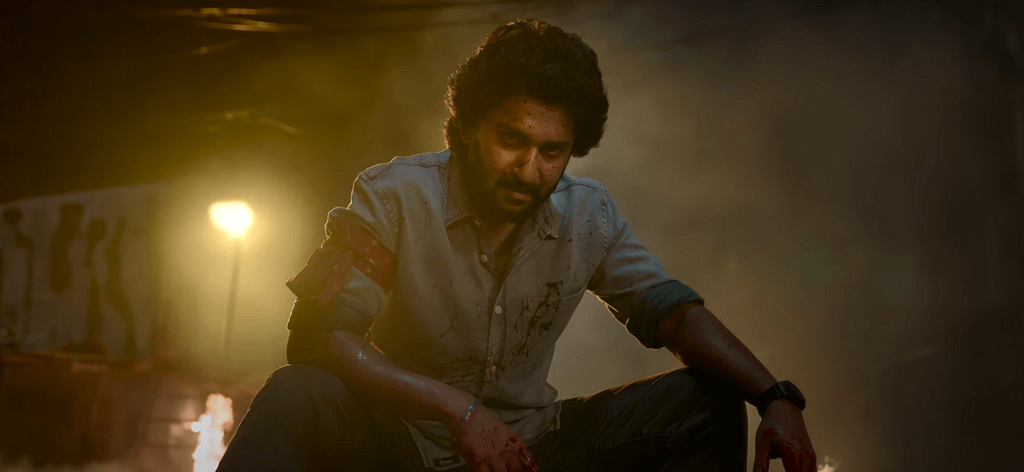In the vast landscape of cinema, there are moments that restore faith in storytelling, especially when it comes to Indian content. Today, let’s dive into two shows that have left a profound impact on me: Khauf and The Pitt. Both series exemplify the beauty of quality writing, rich character dynamics, and an atmosphere that keeps you at the edge of your seat.
The Chilling Tale of “Khauf”
First up is “Khauf,” an Indian horror series available on Amazon Prime Video. Written by Sumita Singh and directed by Pankaj Kumar, known for his cinematography work in movies like “Gunj and Gulab” and “Fukrey,” this show draws viewers into a world where the supernatural intersects with raw human trauma.

The story revolves around a girl named Madhu who moves from Gwalior to Delhi for a fresh start. She finds herself in a girls’ hostel, specifically in room 333, which carries a notorious reputation for paranormal activities. Madhu is not just a victim of the supernatural; she is also a survivor of sexual assault. The series delves into her personal trauma, showing how a malevolent force exploits her vulnerabilities.
What stands out in “Khauf” is its ability to merge real-life horrors with supernatural elements. The initial occurrences in Madhu’s life seem minor, but they gradually escalate, mentally exhausting her. The show uses this tension to create a sense of dread that is palpable. Rather than relying on jump scares, “Khauf” excels in building anticipation, which is a hallmark of effective horror storytelling.
Visual and Cinematic Excellence
One cannot discuss “Khauf” without mentioning its visual treatment. Pankaj Kumar’s cinematography captures the essence of horror with an international standard of CGI and VFX that is surprisingly impressive for Indian content. The aesthetics of the show transport you into a world that feels both familiar and terrifying. It’s a reminder that we can produce world-class narratives that rival international offerings.

However, the show is not just about the visuals; the writing is equally commendable. It evokes a sense of moral responsibility, often hinting that in horror, there must be a resolution that feels satisfying. While some may find the ending convenient, it serves as a reminder that even in darkness, there can be light. The series effectively portrays the struggles of women, showcasing their resilience against both societal and supernatural forces.
Complex Characters and Performances
The performances in “Khauf” are another highlight. The series predominantly features female characters, each showcasing a range of emotions from vulnerability to resilience. Madhu’s character arc is beautifully crafted, portraying her as a multi-dimensional individual rather than just a victim.
Monika Panwar’s portrayal of Madhu is compelling; she embodies the emotional turmoil of her character with authenticity. The supporting cast, including the hostel warden Gracy and her police friend, brings depth to the narrative. Their interactions create a rich tapestry of relationships that highlight the struggles women face.

Rajat Kapoor’s character, Hakeem, is introduced in a way that captures the audience’s attention. His moody demeanor and philosophical dialogues add layers to the horror narrative, making it more than just a scare fest.
Delving into “The Pitt”
Switching gears, let’s talk about “The Pitt,” available on Jio Hotstar. This series takes viewers into the high-pressure world of hospital emergency departments, showcasing the chaotic yet heroic lives of doctors and medical professionals. Spanning 15 hours, “The Pitt” unfolds in real-time, depicting a single day in the emergency department.
The show follows Dr. Robby and his team as they navigate through harrowing situations, treating patients in critical conditions. The intensity of the narrative builds as the day progresses, showcasing the emotional and physical toll on medical professionals. The depiction of their struggles offers a fresh perspective on healthcare, emphasizing the importance of these essential workers.
Realism and Emotional Depth
What makes “The Pitt” stand out is its raw realism. The show doesn’t shy away from the harsh realities of medical emergencies; it delves into the emotional weight that doctors carry when they lose patients. The lead character, Dr. Robby, portrays a blend of professionalism and vulnerability, making him relatable to viewers.

The narrative effectively portrays the chaos of an emergency room where every second counts. The pacing is relentless, and the tension builds as new patients arrive, each with their own stories and struggles. The show brings to light the often-overlooked aspects of healthcare, such as the emotional abuse faced by medical professionals from patients and their families.
A Unique Storytelling Approach
“The Pitt” also introduces a unique storytelling mechanism by showcasing a single day in the hospital through 15 episodes. Each episode, lasting about an hour, immerses viewers in the lives of the doctors as they juggle between saving lives and managing their emotional burdens. This narrative structure effectively captures the urgency and unpredictability of the medical field, making it a gripping watch.
Thematic Resonance
Both “Khauf” and “The Pitt” resonate thematically, highlighting the struggles faced by women and healthcare professionals. They explore the idea of resilience in the face of trauma, whether it’s supernatural forces or the harsh realities of life in a hospital. Both series shed light on the societal pressures and expectations placed on individuals, making them relatable to a broad audience.

In “Khauf,” the horror is both external and internal, reflecting the societal issues that women face. In contrast, “The Pitt” highlights the emotional toll of medical professionals, emphasizing the need for empathy and understanding in the face of crisis. Both series challenge viewers to confront uncomfortable truths about society, making them not just entertainment but also a call for awareness.
Final Thoughts
In conclusion, “Khauf” and “The Pitt” are not just shows to binge-watch; they are experiences that provoke thought and evoke emotions. They remind us of the power of storytelling in cinema, where narratives can transcend entertainment and touch upon deeper societal issues. If you haven’t checked them out yet, I highly recommend diving into these series. They are a testament to the evolving landscape of Indian cinema, showcasing that we can tell stories that are both impactful and visually stunning.
Have you watched “Khauf” or “The Pitt”? What are your thoughts on these shows? Share your experiences in the comments below!


